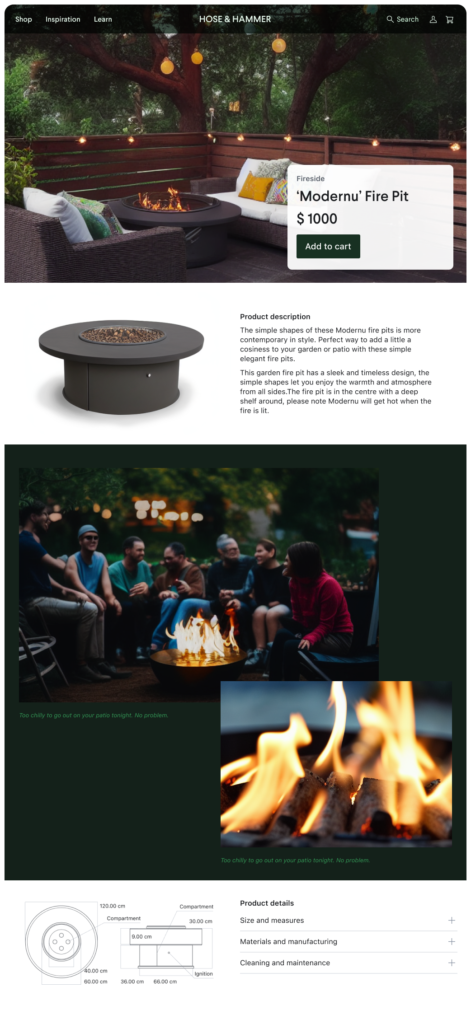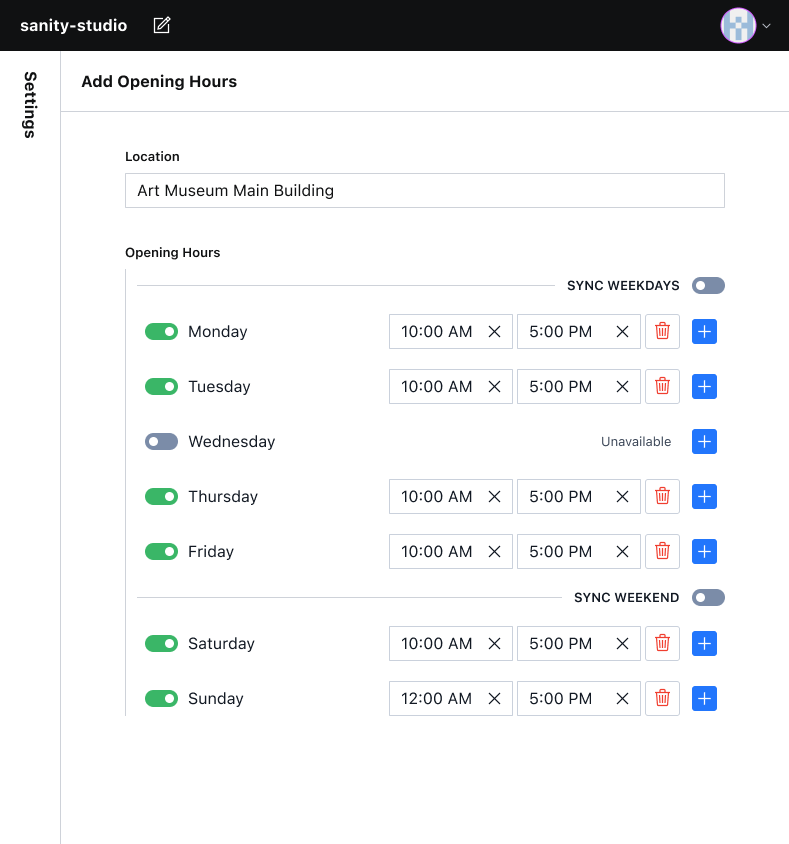
What if you could produce landing pages 86% faster—without engineering help?
What if you could reduce the time it takes to publish content across all your properties from a complex process lasting multiple days to a simple task that takes less than three minutes?
These are real results that InVision and a global fast food chain achieved, using a simple but powerful methodology: structured content.
By “structured content,” I mean content that is broken into its smallest reasonable pieces, which are explicitly organized and classified to be understandable by computers and humans. This could be DITA or XML or Schema.org, but it isn’t limited to that.
At its core, structured content is a powerful framework for thinking about getting the right information to the right people at the right time—without having a gigantic team of content managers, editors, designers, and copywriters.
Structured content:
- Enables editorial teams to publish faster because they are not held up by engineering backlogs
- Allows entire companies to use shared content to drive rich, data-led experiences
- Provides a common language that all functions can use for better alignment and collaboration
- Empowers small teams to do more
- Lets anyone scale faster from any starting point
Companies across all sectors and of all sizes are using structured content to improve the customer journey, create more business value, and enhance content operations.
Let’s look at how structured content enhances each of these areas.
Improving the Customer Journey
Content powers every stage of the customer journey, starting with awareness. Say you are in the business of selling home goods, including luxury fire pits. For a large-ticket item like this, people won’t necessarily buy it the first time they see it. They might need to do some research. Or, they might need some inspiration.
When a potential customer encounters your fire pit product page, what will inspire them to buy?
A page that looks like all the other products?

Or a page that helps the person imagine themselves living with and enjoying their new firepit?

These are representations of the same product: The Modernu fire pit. Both pages have the exact same text and images. But they look different. One is just stating facts, while the other is telling a story about the product.
You may think that highlighting products this way requires a designer to create a special custom page from scratch. But with structured content, this isn’t necessary. In fact, creating these pages becomes easier and more programmatic. The team only needs to create two layouts: one for Standard products, and one for Premium products. If you tag a product as Premium, it will automatically get the “lifestyle” treatment.
This is all possible because the content’s structure is not tied to its presentation. The beauty of this approach is that it scales even as we add new products.
The example above covers shopping sites, but what if you’re a media or nonprofit organization? Maybe you’re in the business of educating or entertaining, and the content itself is your product.
In this case, you want people to interact with your organization through different types of content and eventually become an evangelist, ambassador, or loyal subscriber. Their needs at any given time might be different, so you need to create pathways to cater to these different journeys.
Here’s an example of how structured content can help: a fundraising organization discovered through user research and content modeling that “stories” were what motivated people to donate.
So they created content focused on storytelling and connected all their content types—Events, People, Stories, and Areas of Impact—in a way that lets website visitors start anywhere and discover these stories for themselves. And the fundraisers can use this content to engage directly with their audience, no matter where they are on their journey with the organization.
When you embrace structured content, you don’t have to know someone’s intent when they come into contact with your content. You make it possible for them to choose their own adventure.
Providing Business Value
Ultimately, content should help solve business problems, whether that’s generating leads, retaining customers, increasing revenue, or creating cost efficiencies. When we think about content as just a web page or a document, we miss opportunities to solve big problems with simple solutions. Structured content is the essence of what allows us to do more with less and get a better return on investment for the content we create.
Adding just a bit of structure to existing content can have major benefits. One home improvement store added some simple structure to their guides, including tags and standardizing templates to include specific types of images and text sections. Within a year, the guides with the new structure brought 500% higher average visits and 753% higher average revenue.
Support content can mean the difference between someone keeping or canceling their service. Structured content makes it easier for customer support teams to keep content updated and localized across all their markets. One software company added structure to their support content to make it more efficient to manage and translate. They break articles into discrete fields with English as the primary language for all of the fields. And, they only localize the fields that they need to translate for relevant markets. They do the same with snippets that appear in multiple articles. Customer support managers can manage the taxonomy of markets and languages directly, so it’s always up to date.
Enhancing Content Operations
Structured content can also create efficiencies for content operations. It empowers the people who create, manage, and produce content to have full autonomy in their day-to-day work.
Create Once, Publish Everywhere
A single item of content rarely lives in a single place online. Chances are, any piece of information needs to be present in multiple places. As we publish content across more and more channels, we can’t afford to maintain different sets of content for each one.
When you structure content based on meaning and intent instead of presentation, you can COPE—create once, publish everywhere. By extension, you can also update once, publish everywhere.
Take opening hours, for example. Opening hours need to be accurate and posted in many places. This information is often locked into rich text fields and usable only on that one page. Adding structure by putting opening hours into data fields built specifically for this type of functionality unlocks new opportunities and lowers the risk of people finding the wrong information.

When one museum took this approach, it opened up two opportunities:
- They could put opening hours in more places, enabling more people to easily find them. The opening hours now appear in the website footer, on the Visit page, Google Maps, and Google’s knowledge graph. Their website header also states whether the museum is currently open or closed. Down the road, the same data can be used on the kiosk at the information desk in the museum, in an app, maybe with a notification when it’s nearing closing time. The possibilities are endless!
- It’s faster to update. Someone with the right permissions can update the opening hours in just a few minutes and have the new times show up everywhere that pulls in that data.
Editorial Autonomy
Instead of stifling creativity and putting all content into a mold, structure provides the necessary constraints that allow everyone to work independently and in coordination with each other.
Writers can provide their work in a structure that matches the content technology that stores it. The digital team can map the underlying data to the presentation. The digital marketing team can pull the right bits of a content item into the different channels without recreating it.
Because everyone is using a shared understanding of the content structure, editors can publish without needing brand design and engineering support every time. No one is left waiting for others to triage and complete a ticket.
Be More Creative and Proactive
Structured content opens up new ways of approaching content production and expression. The operational efficiencies of structured content allow content designers and strategists to have more time to be proactive. They get out of the business of reacting to designs that need content now, because content drives the experience. They can try new things more quickly and at a lower cost because they can work more independently within the structures created.
The engineering and editorial teams at one media outlet worked together to create editorial tools that allowed journalists to put together text, images, and video in ways that were previously unavailable to them. By investing in the editorial experience and structured content, journalists can experiment and iterate on the content with live previews and collaborative, real-time editing.
Start Your Structured Content Journey
Structured content is kind of magic when you turn it into a philosophical way of approaching content rather than a way to define your database. It helps you to:
- Meet your customers wherever they are on their journey
- Tie your work to business goals
- Make content operations more efficient and effective
There is no perfect time to change how we think about content and how we express it or how we work. Right now is the right time if you decide it is. Here are some ideas for the first step:
- Take a look at your to-do list and see if one of the items could be viewed from a different perspective—and try something different.
- Share this article with a colleague who might be interested in working with you on something different.
- Plan a pilot project to test these ideas—something low risk that you can lead that just might succeed and be the catalyst for a whole new future.
- Something else—maybe this has given you an idea of what you can do. Give it a try. There are no wrong answers!
Instead of stifling creativity and putting all content into a mold, structure provides the necessary constraints that allow everyone to work independently and in coordination with each other.
-
Events, Resources, + More
New Data: Content Ops + AI
Get the latest report from the world's largest study of content operations. Benchmarks, success factors, commentary, + more!
The Ultimate Guide to End-to-End Content
Discover why + how an end-to-end approach is critical in the age of AI with this comprehensive white paper.
The Content Advantage Book
The much-anticipated third edition of the highly rated book by Colleen Jones is available at book retailers worldwide. Learn more!
20 Signs of a Content Problem in a High-Stakes Initiative
Use this white paper to diagnose the problem so you can achieve the right solution faster.






Comments
We invite you to share your perspective in a constructive way. To comment, please sign in or register. Our moderating team will review all comments and may edit them for clarity. Our team also may delete comments that are off-topic or disrespectful. All postings become the property of
Content Science Review.